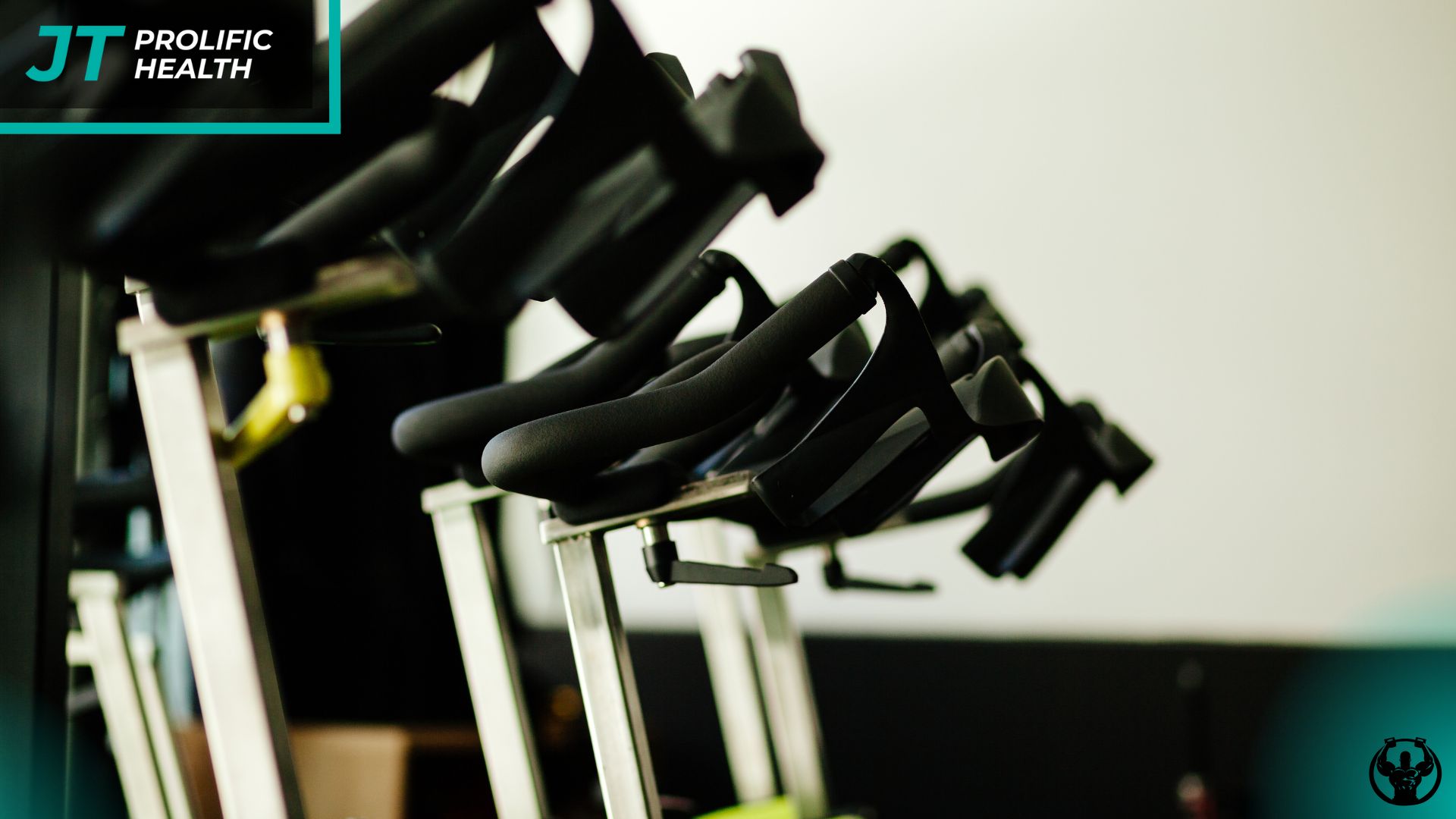Did you know 70% of fitness enthusiasts hit a performance plateau within three months? Random workouts often leave you stuck, frustrated, and far from your goals. At Prolific Health, we’ve helped athletes in Richmond and Vancouver break through these barriers using science-backed strategies.
Your body thrives on balance. Pushing too hard without recovery leads to burnout. Not challenging yourself enough? Progress stalls. Our approach aligns with how your physiology works: stress, adapt, repeat. This method builds strength and endurance sustainably.
Local weather and lifestyle play roles too. Coastal climates demand adaptable routines. Whether you’re prepping for a marathon or aiming for daily energy, structured programs prevent plateaus. We design plans that evolve with you, ensuring every effort moves you closer to success.
Key Takeaways
- Structured programs outperform random workouts for long-term results
- Plateaus often stem from imbalanced stress and recovery phases
- Local environmental factors shape effective fitness strategies
- Gradual adaptation drives sustainable performance gains
- Personalized plans align with your unique objectives
Introduction and Overview


Effective fitness strategies aren’t about constant effort—they’re about smart timing. At Prolific Health, we help athletes in Richmond and Vancouver align their routines with proven methods that balance challenge and recovery. This approach, called periodization, divides your annual plan into focused phases to optimise progress while protecting your body from burnout.
What Are Structured Fitness Phases?
Think of your yearly plan as seasons. Just as nature cycles through growth and rest, your workouts need strategic variation. We organise programs into blocks lasting weeks or months, each targeting specific goals like building endurance or refining technique. This systematic method prevents overexertion while steadily improving performance.
Why Periodisation Matters
Random routines often lead to frustration. Our clients see better results because periodisation alternates intensity levels intentionally. You’ll push hard during focused sprints, then ease into recovery periods. Coastal climates like Vancouver demand this adaptability—rainy days might shift your outdoor runs to group strength sessions, keeping progress consistent.
Understanding Training Cycles and Periodisation
Have you ever wondered why some athletes make steady progress while others stall? The answer lies in how they organise their efforts. Periodisation breaks your fitness journey into three interconnected layers: the big picture, focused blocks, and daily action steps. Think of it like building a house—you need a blueprint (macrocycle), structured phases (mesocycles), and individual bricks (microcycles).


Defining Macrocycles, Mesocycles, and Microcycles
Your macrocycle is your entire season. Whether prepping for a marathon or improving overall health, this spans months to a year. It’s your roadmap, outlining where you start and where you’ll finish.
Mesocycles divide this journey into 3-6 week chapters. Each targets specific adaptations—like boosting endurance or mastering technique. Coastal athletes in Vancouver might schedule strength phases before rainy seasons to maintain momentum indoors.
Microcycles are your weekly game plans. These 7-day units balance workouts, rest days, and active recovery. They’re flexible enough to adapt to life’s surprises while keeping mesocycle goals on track.
Together, this hierarchy prevents plateaus. Each microcycle builds toward mesocycle targets, which collectively achieve macrocycle objectives. Our clients in Richmond find this structure eliminates guesswork—they know exactly how today’s workout contributes to next month’s progress.
Developing Your Training Plan with Periodised Workouts
Crafting an effective fitness strategy requires more than just effort—it demands smart structure. At Prolific Health, we help athletes in Richmond and Vancouver build plans that evolve with their capabilities while respecting natural adaptation rhythms.


Designing a Mesocycle for Optimal Adaptation
Your 3-4 week mesocycle acts like a progress accelerator. We start by gradually increasing workout stress through carefully measured intensity levels. A 25-year-old competitor might follow a 23-day push with 5 recovery days, while someone newer to fitness could use a 16-day build phase.
Each session targets specific improvements. Strength days alternate with endurance-focused workouts, creating layered adaptations. Coastal athletes in Vancouver often pair indoor private training with outdoor cardio during rainy weeks—maximizing consistency.
Balancing Intensity and Recovery in Your Routine
The secret to sustainable progress lies in strategic variation. High-intensity days should account for only 20-30% of your weekly plan. Our clients learn to sandwich tough sessions between moderate efforts and active recovery.
Consider this approach:
- Week 1: Build foundation with moderate effort
- Week 2-3: Increase intensity gradually
- Week 4: Reduce load for adaptation
This rhythm prevents burnout while encouraging gains. Older athletes in Richmond often benefit from shorter 21-day cycles with extra recovery days. Your plan should match your body’s responses—not arbitrary calendars.
Customising Your Training for Strength, Endurance and Recovery
Your body isn’t a generic machine—it needs tailored strategies to unlock its full potential. At Prolific Health, we craft programs aligning with your unique physiology and goals. Whether building muscular endurance for hiking trails or boosting power for competitive sports, personalisation drives results.
Adapting Your Plan to Match Personal Fitness Levels
Start by assessing your current capabilities. Newcomers might focus on general fitness with moderate sessions, while seasoned athletes target specific energy systems. Coastal climates in Vancouver demand adaptable approaches—swap outdoor runs for hybrid training during heavy rains.
Integrating Varied Training Loads for Progressive Overload
Progress happens through strategic challenge. Alternate between aerobic endurance phases and high-intensity intervals. Gradually increase volume by 10% weekly, monitoring how your body responds. Our Richmond clients learn to balance heavy lifting days with active recovery.
Practical Tips to Maximise Adaptation
Track these three factors:
- Sleep quality (aim for 7-9 hours)
- Nutrition timing (fuel before/after key sessions)
- Stress markers (resting heart rate, mood changes)
Adjust load based on feedback—reduce intensity if fatigue lingers. Pair strength drills with mobility work to prevent plateaus. Remember: sustainable gains come from listening to your body, not pushing blindly.
Incorporating Scientific Principles and Local Data
How do you know which fitness strategies actually work? At Prolific Health, we ground every recommendation in peer-reviewed research and regional insights. Our approach combines exercise science with real-world data from Richmond and Vancouver athletes.
Evidence-Based Insights from Government and Research Sources
Studies show structured phases outperform random routines. Research from Canadian universities reveals no significant difference between linear and nonlinear periodisation models—both boost performance when properly applied. This aligns with Dr. Hans Selye’s General Adaptation Syndrome theory, which forms our foundation.
We analyze local factors shaping your progress. Vancouver’s rainy winters and Richmond’s summer humidity demand adaptable exercise plans. Air quality data informs outdoor workout timing, while community health trends help us predict common plateaus.
Consider these science-backed examples:
- High-intensity intervals improve VO2 max faster than steady-state cardio
- Strength phases lasting 4-6 weeks optimize muscle adaptation
- Active recovery days maintain mobility during deload weeks
Our team translates complex research into actionable steps. You’ll understand why specific intensities work for your goals, how different exercise types complement each other, and when to adjust phases based on performance metrics. Science guides the plan—your results prove it.
Contacting Prolific Health for Expert Guidance
Struggling to balance intensity and recovery in your fitness journey? Our team at Prolific Health crafts personalised strategies that align with your body’s needs and local conditions. Whether you’re preparing for a competition or seeking sustainable progress, we provide the roadmap to success.
How We Support Your Progress in Richmond and Vancouver
Working with a coach eliminates guesswork. We analyze your current fitness level, goals, and schedule to design programs that adapt to coastal weather patterns. Rainy days in Vancouver become opportunities for focused online coaching, while Richmond’s summer heat informs hydration strategies.
Our approach includes:
- Tailored consultations to identify your peak performance windows
- Event-specific preparation that maintains long-term health
- Weekly check-ins to adjust load based on your recovery
Leveraging Regional Insights for Better Results
Local data shapes every plan we create. We track air quality trends, community fitness benchmarks, and seasonal changes affecting outdoor workouts. This knowledge helps you train smarter—not harder—while avoiding common pitfalls like overexertion.
Ready to transform your approach? Call 604 818 6123 today. Let’s build a strategy that works with your life, not against it. Coastal athletes across BC trust our methods—your breakthrough starts here.
Conclusion
Breaking through fitness plateaus requires more than willpower—it demands a roadmap. Periodization gives your body the structure it needs to adapt progressively, whether you’re chasing peak performance or sustainable health gains. This method works because it respects natural rhythms: challenging phases build capacity, while recovery periods lock in improvements.
Everyone benefits from this approach. Competitive athletes use mesocycles to prep for events, while casual exercisers prevent burnout through varied intensities. The magic lies in balancing work and rest—strategic load management keeps progress steady without overtaxing your system.
Coastal climates like Richmond and Vancouver add unique challenges. Our team at Prolific Health factors in local weather patterns and lifestyle demands when designing your plan. Rainy days become strength-building opportunities, while sunny stretches optimize outdoor endurance work.
Ready to transform how you approach fitness? Let’s craft a strategy that evolves with your goals and environment. Contact us today—your breakthrough starts with a plan built for real life.




